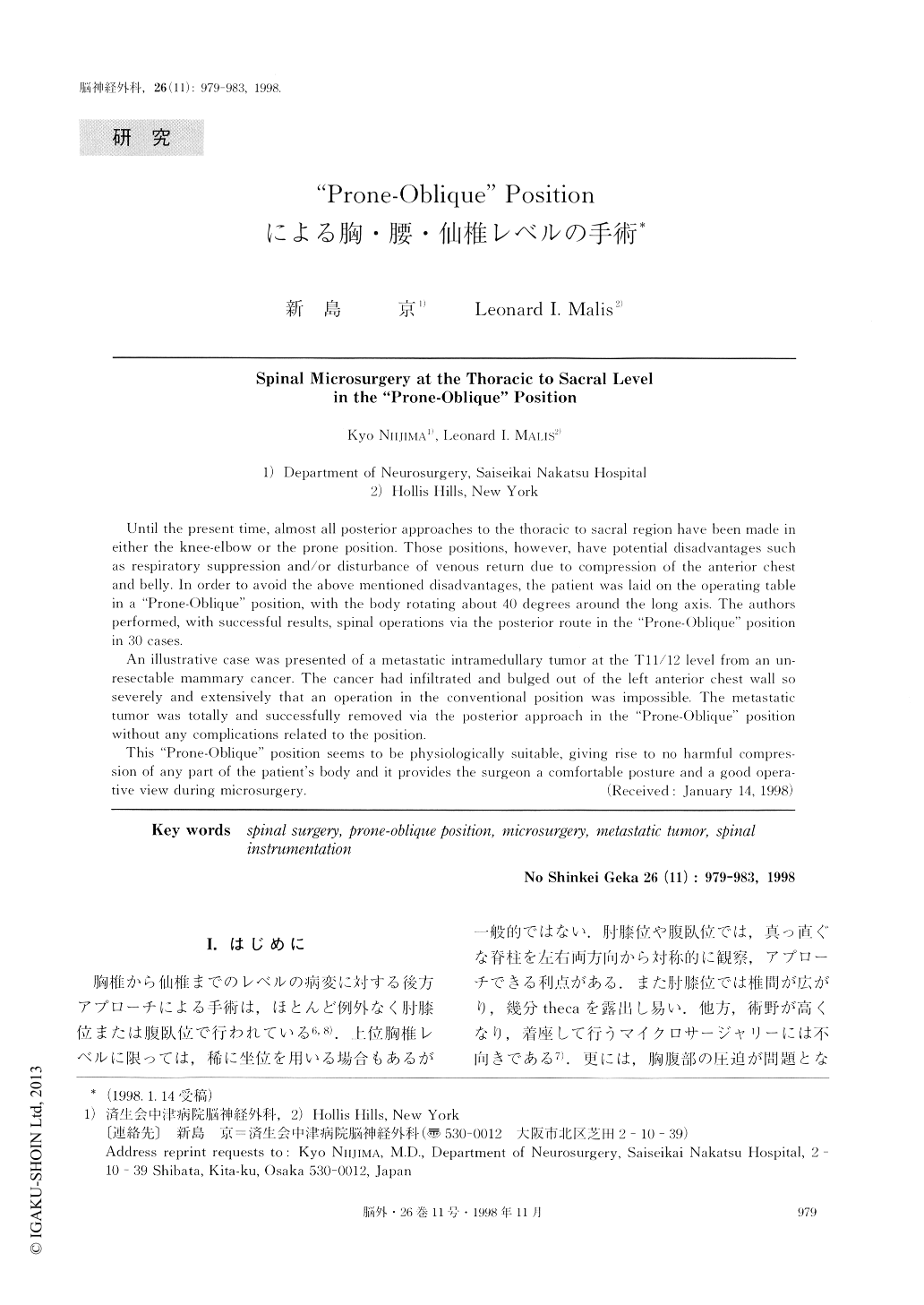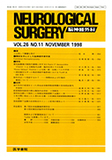Japanese
English
- 有料閲覧
- Abstract 文献概要
- 1ページ目 Look Inside
I.はじめに
胸椎から仙椎までのレベルの病変に対する後方アプローチによる手術は,ほとんど例外なく肘膝位または腹臥位で行われている6,8).上位胸椎レベルに限っては,稀に坐位を用いる場合もあるが一般的ではない.肘膝位や腹臥位では,真っ直ぐな脊柱を左右両方向から対称的に観察,アプローチできる利点がある。また肘膝位では椎間が広がり,幾分thecaを露出し易い.他方,術野が高くなり,着座して行うマイクロサージャリーには不向きである7).更には,胸腹部の圧迫が問題となる場合や1-3,9,10),合併病変によって胸腹部を下にする体位が不可能な場合もある.
脊髄脊椎のマイクロサージャリーを行う上での肘膝位や腹臥位の問題点を改善する目的で,筆者らは,Malis3)の推奨するprone-oblique position(P-O)下の後方アプローチを試み4,5),良好な結果を得ている.
Until the present time, almost all posterior approaches to the thoracic to sacral region have been made in either the knee-elbow or the prone position. Those positions, however, have potential disadvantages such as respiratory suppression and/or disturbance of venous return due to compression of the anterior chest and belly. In order to avoid the above mentioned disadvantages, the patient was laid on the operating table in a “Prone-Obllque” position, with the body rotating about 40 degrees around the long axis. The authors performed, with successful results, spinal operations via the posterior route in the“Prone-Oblique” position in 30 cases.
An illustrative case was presented of a metastatic intramedullary tumor at the T11/12level from an unresectable mammary cancer. The cancer had infiltrated and bulged out of the left anterior chest wall so severely and extensively that an operation in the conventional position was impossible. The metastatic tumor was totally and successfully removed via the posterior approach in the“Prone-Oblique”position without any complications related to the position.
This “Prone-Oblique” position seems to be physiologically suitable, giving rise to no harmful compression of any part of the patient's body and it provides the surgeon a comfortable posture and a good operative view during microsurgery.

Copyright © 1998, Igaku-Shoin Ltd. All rights reserved.


